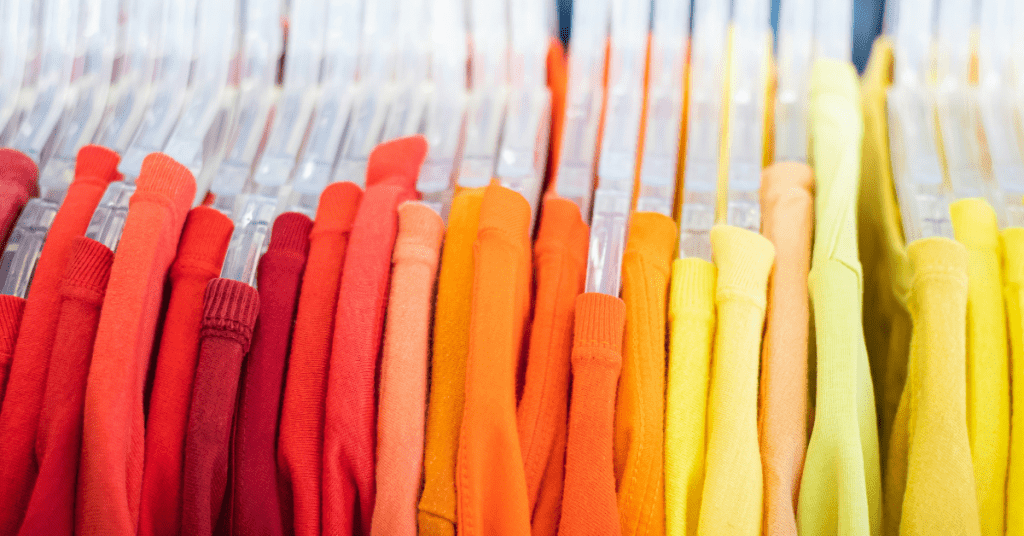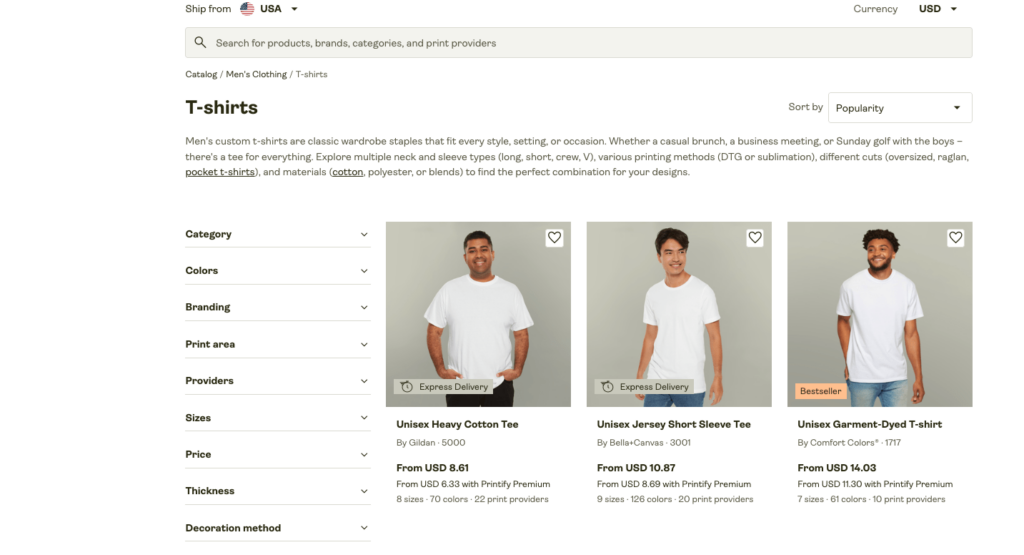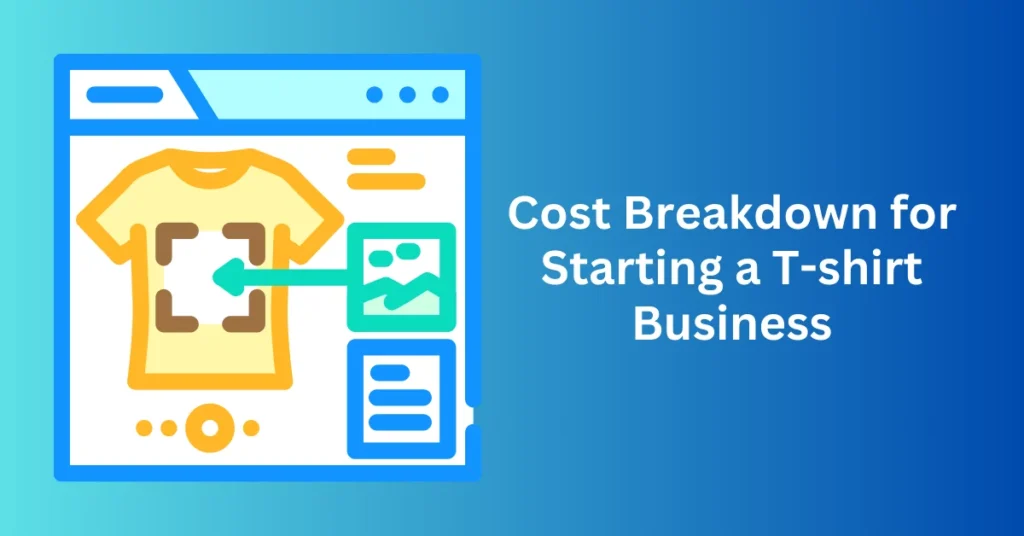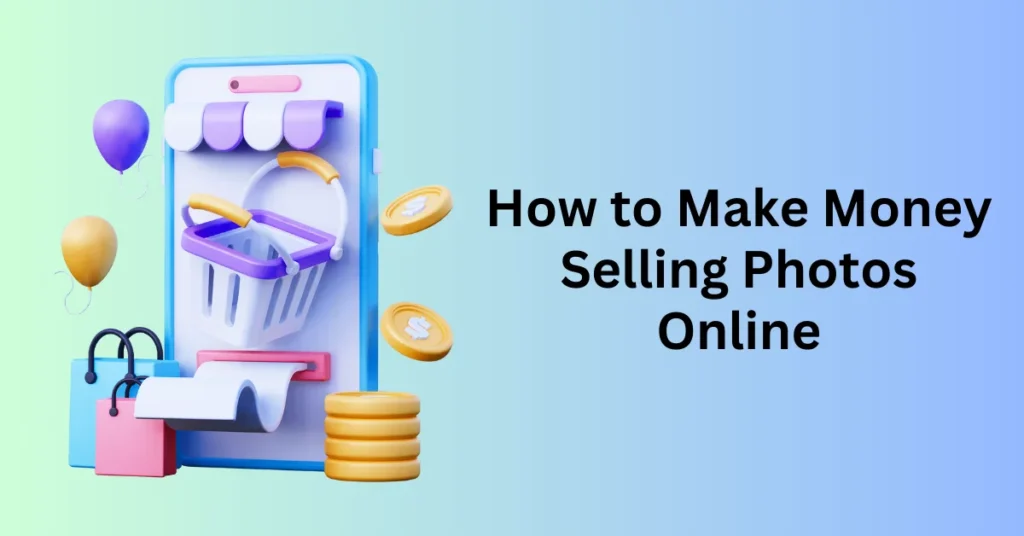Launching a t-shirt printing business is an exciting opportunity to turn creativity into profit, but understanding the costs involved is key to setting yourself up for success. Whether you’re starting small with a print-on-demand model or diving into full-scale production with your own inventory and equipment, having a clear picture of the expenses will help you plan effectively and avoid surprises.
From equipment and inventory to marketing and operational costs, this guide breaks down the key investments required for both print-on-demand and traditional t-shirt printing businesses. By comparing these options, you’ll be able to choose the model that fits your budget, goals, and long-term vision. Let’s explore what it takes to turn your t-shirt brand dreams into a thriving reality!
Different T-Shirt Business Models
Starting a t-shirt business involves choosing a business model that aligns with your goals, budget, and operational preferences. The two primary options are holding your own inventory or using a Print on Demand (POD) service. Each approach has its own set of advantages and challenges.
Print on Demand (POD)

POD is an increasingly popular business model because it minimizes upfront costs and simplifies operations. Instead of investing in large quantities of inventory, expensive equipment, and storage, you partner with platforms like Printify or Printful. Here’s why POD is appealing:
- Low Startup Costs
You don’t need to purchase blank t-shirts or equipment like embroidery machines, screen printers, or heat press setups. This eliminates the need for significant capital investment. - No Inventory Management
With POD, you don’t have to worry about stocking, organizing, or storing inventory. This ensures you won’t be stuck with unsold products that tie up your resources. - Focus on Design and Marketing
The POD platform handles production, packaging, and shipping, allowing you to dedicate more time to creating unique designs and driving sales. - Flexibility and Low Risk
You can experiment with new designs or products without financial risk. If a design doesn’t sell, you lose nothing but time.
However, POD does have some limitations:
- Lower profit margins due to service fees and production costs.
- Less control over the production process, including quality and shipping times.
Own Inventory

This traditional model involves purchasing blank t-shirts in bulk and customizing them yourself or through a local printer. While it requires more work and investment upfront, it offers unique advantages:
- Greater Control
You oversee every aspect of production, from fabric quality to printing methods, ensuring your products meet your standards. - Higher Profit Margins
By managing production yourself, you can reduce per-unit costs, increasing your profit margin on each sale. - Customizable Options
Holding inventory allows you to use diverse printing techniques like screen printing, direct-to-garment (DTG), or embroidery, giving your brand a competitive edge.
However, this approach comes with challenges:
- Significant upfront costs for inventory, equipment, and workspace.
- The need to manage unsold products can lead to wasted resources.
- Higher operational complexity requires time and effort for production and logistics.
Operational Costs of a T-Shirt Business
Understanding the operational costs associated with different t-shirt business models is essential to optimizing your budget and maximizing profits. Below, we’ll explore the key cost components for both Print on Demand (POD) and own inventory models to help you make an informed decision.
Inventory Management Costs
Print on Demand (POD)
POD eliminates the need for inventory storage, as products are printed and shipped only after a customer places an order. However, you’ll still incur platform fees, which vary depending on your sales channel:
- Etsy: $0.20 per listing + 6.5% transaction fees.
- Shopify: $29/month for the basic plan + 2.9% + $0.30 per transaction.
- Amazon: $39.99/month for a professional plan + 8%-15% referral fees per sale.
These fees should be factored into your pricing strategy to maintain profitability.
Own Inventory
In contrast, holding inventory requires upfront investment in blank t-shirts and storage. Key costs include:
- Blank T-Shirts: $3-$6 per unit, depending on the brand and quality.
- Storage Solutions: Renting a small storage space costs $50-$150/month, or you may need shelving, bins, or racks for organization.
- Warehousing: Larger-scale operations may require dedicated warehouse space at higher costs.
Production Costs
Print on Demand (POD)
With POD, production costs are included in the product’s price, simplifying your budgeting. For instance:
- A standard cotton t-shirt from Printify costs $6-$15 depending on the brand and print method.
Because production only occurs after a sale, there’s virtually no financial risk.
Own Inventory
Managing your own production allows for greater customization but requires significant investment in equipment:
- Heat Press Machine: $150-$500 for entry-level models.
- Screen-Printing Kits: $250-$1,000, depending on complexity.
- Direct-to-Garment Printers (DTG): $10,000-$20,000 for professional-grade machines.
These costs make the inventory model better suited for businesses with higher initial budgets or established customer bases.
Shipping Costs
Print on Demand (POD)
Shipping costs vary by destination and the POD provider’s network. Typical costs include:
- Per Order: $4-$10, depending on size and location.
- These costs can either be passed on to customers or absorbed into your product pricing.
Own Inventory
Handling shipping yourself adds additional costs:
- Packaging Materials: $0.30-$1 per order (e.g., poly mailers or boxes).
- Postage: $4-$15 per shipment based on size and location.
- You’ll also need to allocate time for packing and shipping, or hire help as your order volume grows.
Additional Costs
Print on Demand (POD)
POD reduces overhead significantly as you won’t need physical premises or staff. Typical costs include:
- Platform Fees: Monthly subscriptions for Shopify, Etsy, or Amazon.
- Design Software: $10-$50/month for tools like Canva or Adobe Illustrator.
- Marketing: Essential for driving sales, as discussed below.
Own Inventory
Operating a traditional t-shirt business adds several overhead costs:
- Workspace Rental: $500-$1,500/month, depending on size and location.
- Staffing: Average hourly wages of $15-$20 for production or retail staff.
- These expenses can strain your budget if not carefully managed.
Marketing Costs
Marketing is crucial for building brand visibility and driving sales, whether you choose POD or inventory-based models. A combination of free and paid strategies works best.
Free Advertising
Social Media Marketing is a powerful way to connect with your audience and promote your t-shirt designs. To maximize its effectiveness, focus on creating engaging content for platforms like Instagram, TikTok, and Pinterest. Additionally, you can utilize trends such as reels, user-generated content, and popular hashtags to increase visibility and drive traffic to your store. By posting consistently and interacting with your audience, you can build a loyal community around your brand, which helps foster long-term relationships.
SEO, on the other hand, is crucial for making your products discoverable online. To optimize your presence, focus on refining product titles and descriptions with relevant keywords like “custom t-shirts” or “graphic tees.” Tools such as Google Keyword Planner can help you identify high-performing search terms that will boost your rankings and attract organic traffic to your website, ultimately increasing your store’s visibility.
In addition, Email Marketing allows you to nurture relationships with your customers and encourage repeat purchases. Start by using your website to collect email addresses, and then send exclusive offers, updates, or early access to new designs. By maintaining a strong email strategy, you can keep your audience engaged while building long-term customer loyalty, which is essential for the sustained growth of your business.
Content Marketing is another effective way to draw in potential buyers. Consider creating blog posts or how-to videos that resonate with your audience, such as “Styling Tips for Graphic T-Shirts.” Providing valuable and relevant content not only attracts organic traffic but also positions your brand as an authority in your niche.
Paid Advertising
Paid advertising is an excellent way to quickly attract targeted traffic to your online store. When combined with the right strategy, it can significantly boost your brand’s visibility and increase sales effectively.
Social Media Ads, for example, are a popular option for reaching potential customers on platforms like Facebook and Instagram. These platforms allow you to set daily budgets as low as $5, making them accessible for businesses of all sizes. Moreover, the average cost-per-click (CPC) ranges from $0.50 to $2, depending on your target audience and ad quality.
Another impactful option is Influencer Marketing. By collaborating with influencers in your niche, you can leverage their established audience to build trust and drive traffic to your store. Micro-influencers typically charge around $50 per post, whereas influencers with larger followings may charge $500 or more. To maximize ROI, it’s important to choose influencers whose audience aligns with your target market.
In addition, Google Ads enable you to run paid search campaigns that target competitive keywords. With an average CPC of $1 to $2, this option allows you to reach customers who are actively searching for products like yours. By optimizing your campaigns with relevant keywords, you can improve ad performance and attract high-intent buyers.
Furthermore, Platform-Specific Ads on eCommerce platforms like Etsy and Shopify are another effective way to promote your products. These built-in advertising tools allow you to tailor campaigns to your budget while benefiting from platform-specific insights and audience targeting. The costs for these ads vary depending on your campaign’s budget and performance metrics.
By combining these paid advertising strategies with organic marketing efforts, you can create a well-rounded approach to scaling your t-shirt business and achieving sustainable growth.
Profit Margins and Financial Planning for a T-Shirt Business
Building a sustainable t-shirt business starts with understanding your profit margins and developing a solid business plan. These foundational elements will help you navigate the market and set realistic goals for growth.
Calculating Profit Margins
Profit margin represents the percentage of revenue that remains as profit after deducting all expenses. For a t-shirt business, the average profit margin is 40%, but this can vary based on several factors:
Key Factors Influencing Profit Margins
- T-Shirt Quality: Higher-quality materials cost more, which can reduce your margin unless you adjust your pricing. Premium t-shirts may cost $10-$15 but can justify a higher selling price for a niche audience.
- Pricing Strategies: Experiment with methods like tiered pricing, where customers pay less per shirt in bulk, or bundling, where multiple items are sold together at a slight discount. These strategies can increase your average order value (AOV).
- Target Market: Understand your audience’s spending habits. For example, a luxury market may accept higher prices, while a casual, budget-conscious audience will prefer affordability.
Developing a T-Shirt Business Plan
A well-structured business plan is essential for staying organized, attracting investors, and guiding your decision-making. It acts as your business’s roadmap, helping you stay on track as you grow.
Executive Summary
The executive summary provides a concise overview of your t-shirt business, serving as an introduction to your vision, mission, and target audience. It effectively captures the essence of your brand while outlining what you aim to achieve. For example, your mission might emphasize offering eco-friendly, customizable t-shirts for socially conscious consumers who value sustainability. Additionally, this section sets the stage for the rest of your business plan, clearly showcasing the purpose and direction of your venture, thus providing a solid foundation for the details that follow.
Company Description
The company description delves into the foundational details of your business. It includes your business structure, such as whether it’s a sole proprietorship, partnership, or LLC, and specifies ownership roles. Additionally, this section addresses legal requirements like obtaining a business license, registering for sales tax, and ensuring compliance with local regulations. By covering these essentials, the company description establishes a strong base for your operations and assures potential stakeholders of your preparedness.
Products and Services
In the products and services section, you describe the offerings that make your t-shirt business unique. Highlight the types of t-shirts you plan to sell, whether they are graphic tees, custom designs, or premium materials, as well as complementary items like hoodies or hats. This is also where you define your unique selling proposition (USP), explaining how your products stand out from competitors. For example, if you’re focusing on organic cotton t-shirts featuring exclusive artist collaborations, emphasize how this adds value for your customers and aligns with your brand’s identity.
Marketing and Sales Plan
The marketing and sales plan outlines how you will reach your target audience and drive sales. Begin by identifying your ideal customer, considering demographics, interests, and purchasing habits. Then, detail your promotional strategies, such as leveraging social media platforms, collaborating with influencers, or launching email marketing campaigns. Be specific about your sales channels, whether you’ll use eCommerce platforms like Shopify or Etsy, or operate a physical storefront. This section ensures you have a well-thought-out approach to building brand awareness and converting leads into customers.
Financial Projections
The financial projections section offers a detailed look at your business’s potential profitability. To begin, estimate your startup costs, which may include expenses like website setup, design software, blank t-shirts, and initial marketing campaigns. Next, break down your ongoing operating expenses, such as platform fees, shipping costs, and advertising budgets. Finally, project your revenue based on anticipated sales volumes. These projections, in turn, provide a roadmap for financial success, helping you set realistic goals and measure your progress as your t-shirt business grows.
Starting a T-Shirt Business with Printify

Launching a custom t-shirt brand has never been easier, thanks to Printify. This all-in-one platform streamlines the process of starting and growing your t-shirt business, eliminating the need for managing inventory or investing in expensive equipment. Whether you’re a seasoned entrepreneur or just testing the waters, Printify offers powerful tools and features to help you succeed.
Free Design Tool
Printify’s free Product Creator is a revolutionary tool designed to simplify the design process for both beginners and experts alike. Thanks to its user-friendly interface, you can easily create eye-catching t-shirt designs and visualize how the final product will look. Key features such as an AI image generator, color and placement customization, a text editor, a background remover, and a pattern creator make the process even more efficient. Additionally, access to the Shutterstock library further expands your design possibilities, providing even more options for creativity. As a result, this intuitive approach ensures that even those with no graphic design experience can craft professional-looking shirts with ease.
Extensive Product Catalog
One of Printify’s standout features is its extensive Product Catalog, which offers the largest selection of customizable items on the market. In addition to various t-shirt styles, Printify also provides a wide range of other apparel and accessories, giving you the flexibility to expand your clothing line as your brand grows. Furthermore, with popular printing options such as direct-to-garment, direct-to-film, and all-over printing available through Printify’s network of Print Providers, you can ensure high-quality products for your customers. This variety allows you to explore diverse styles and designs, ensuring your product offerings remain fresh and appealing.
Integrations with eCommerce Platforms
Printify seamlessly integrates with leading eCommerce platforms like Shopify, Etsy, and more, making it incredibly simple to add custom products to your online store. These integrations, in turn, enable a streamlined workflow that covers everything from product creation to sales, inventory management, and fulfillment. By automating these critical processes, Printify allows you to focus on what matters most—developing your marketing strategy and scaling your business. Whether you’re selling on a standalone website or a marketplace, Printify ensures a hassle-free experience, giving you the freedom to grow your brand without the complexity of manual operations.
With tools that simplify design, a vast range of products, and seamless eCommerce integrations, Printify equips you with everything you need to build a successful t-shirt brand. Dive into the world of custom tees and let Printify handle the complexities, so you can focus on growing your business and unleashing your creativity.
How to Start a T-Shirt Business for Free with Printify
Starting a t-shirt business has never been more accessible, and with Printify, you can launch your venture without upfront costs. Follow these simple steps to turn your creative ideas into a profitable online store.
1. Sign Up
Begin by creating your free account on Printify. The signup process is quick and straightforward, granting you immediate access to the platform’s powerful tools and features. Once registered, you can explore the extensive product options and design tools at no cost.
2. Pick a Product
Browse Printify’s extensive Product Catalog to find the perfect base for your designs. With a wide selection of t-shirts available in various styles, fits, and materials, you can choose products that best suit your target audience. Compare Print Providers to select the ideal combination of quality, price, and shipping options.
3. Design Your T-Shirt
Use Printify’s intuitive Product Creator to bring your designs to life. Upload your artwork, then experiment with placements, colors, and graphics until you’re satisfied with the final look. Whether you’re creating minimalist designs, bold graphics, or typography-based tees, Printify makes it easy to craft professional-quality products.
4. Connect Your Store
Integrate your Printify account with leading eCommerce platforms like Shopify, Etsy, or WooCommerce. These seamless integrations let you manage your products, track sales, and automate order fulfillment all from a single dashboard.
5. Publish, Market, and Sell T-Shirts Online
Once your designs are ready, publish your t-shirts to your online store. Then, focus on promoting your brand using digital marketing strategies. Leverage social media platforms, SEO techniques, and online advertising to attract customers and drive traffic to your store. Engaging content, well-optimized product pages, and targeted ads will help convert visitors into loyal customers.
With Printify, you can start your t-shirt business for free, letting you focus on your creativity and marketing efforts while the platform handles production and fulfillment. It’s an easy and risk-free way to enter the world of eCommerce.
Final Thoughts: Cost Breakdown for Starting a T-shirt Business
Starting a t-shirt printing business can be an exciting and rewarding venture, but it’s essential to approach it with a clear understanding of the costs involved. Whether you opt for a print-on-demand model or decide to manage your own inventory and production, each approach comes with its own set of expenses and benefits. By evaluating the costs for equipment, inventory, shipping, marketing, and platform fees, you can make informed decisions that align with your budget and business goals.
Remember, the key to long-term success isn’t just about managing costs but also about maximizing your profits through effective marketing, strategic pricing, and a focus on quality. No matter which model you choose, careful planning and consistent effort will help you build a strong foundation for your t-shirt business and turn your creative ideas into a thriving brand. Stay focused, be adaptable, and let your passion for design drive your success!


